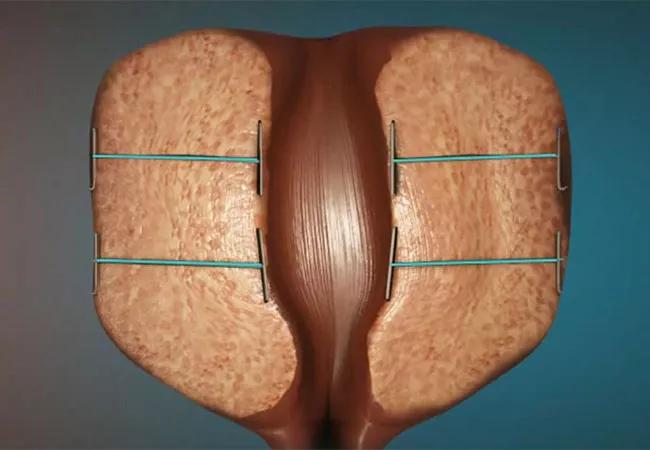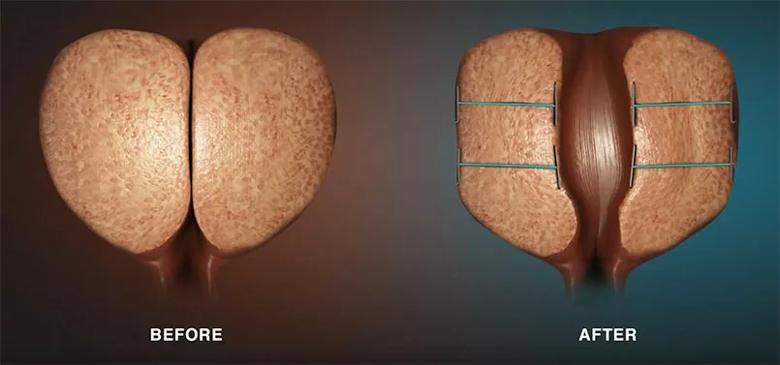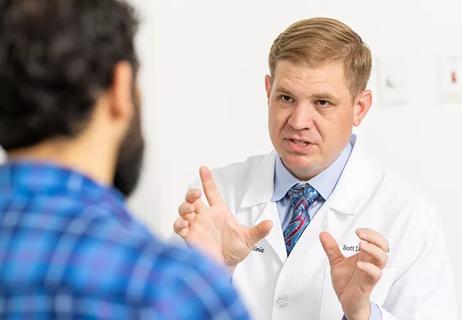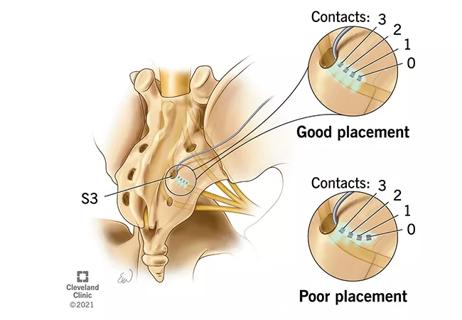Alternatives for condition affecting millions of men as they age

For millions of men, benign prostatic hyperplasia (BPH) disrupts normal activities of daily living and negatively impacts their and often their partner’s lives. Pharmacologic management, surgical resection and ablation are generally effective for this nonlethal disorder, but can cause a variety of disconcerting side effects, including incontinence.
Cleveland Clinic is a non-profit academic medical center. Advertising on our site helps support our mission. We do not endorse non-Cleveland Clinic products or services. Policy
For these reasons, urologists continue to refine minimally invasive nonsurgical alternatives. “Several innovative techniques addressing BPH have ushered in a new era of patient-friendly treatments, all with the potential for fewer side effects,” reports James Ulchaker, MD, Vice Chairman of Urology, Glickman Urological & Kidney Institute. Two are highlighted here.
Researched at Cleveland Clinic by Dr. Ulchaker, Rezūm® System is a transurethral radiofrequency thermal therapy method that uses convective water vapor energy to destroy hyperplastic glandular and stromal cells. Since its FDA approval in late 2015, nearly 100 procedures have been performed at Cleveland Clinic.
The treatment is performed under local anesthesia in an office setting. Urologists pass a specially designed cystoscope through the urethra into the prostate. The device produces steam that is injected into several zones of the prostate for nine seconds per zone. Total treatment time is less than five minutes.
A catheter remains in place for three to seven days to manage swelling. Improvements in urine flow begin around three weeks postprocedure and continue to improve over the course of the following three months.
“We have observed a low risk of side effects with the Rezūm System, coupled with a high satisfaction rate among our patients,” Dr. Ulchaker says. “Men’s ability to have an erection and ejaculate are rarely affected after the procedure. The treatment also avoids harm to the urinary sphincter, thereby reducing the risk of incontinence.”
A single treatment appears to be sufficient, but post-market studies are ongoing.
Another newer procedure for BPH uses a series of anchored permanent implants to reshape the prostatic urethra and relieve constriction without resecting or vaporizing tissue.
Marketed as the UroLift® System, the procedure can be performed in the office setting under local anesthesia. It was cleared for marketing by the FDA in September 2013 and received a Category 1 Current Procedural Technology (CPT) coding on Jan. 1, 2015, with its own code for medical billing purposes.

Permanently placed UroLift implants lift and hold enlarged prostate tissue, increasing the urethral opening. (Image courtesy of NeoTract Inc., Pleasanton, California)
“For properly selected patients, UroLift offers a single, minimally invasive office-based procedure instead of the prospect of taking multiple daily medications for life,” Dr. Ulchaker notes. Standard workup involves urodynamic, cystoscopic and a transrectal ultrasound testing.
“UroLift can be performed on patients who have at least some bladder contraction present, a prostate size of 80 grams or less, and bi-lobar hypertrophy,” he continues. “We cannot offer the procedure when middle lobe growth is present. The patient makes the final decision regarding choice of treatments.”
While this procedure does not improve the urine flow rate as well as transurethral resection of the prostate (TURP) or electro- or laser vaporization, some men prefer UroLift. Some still choose medication as well.
The procedure involves a prostate block, delivered transrectally, and lidocaine jelly to numb the urethra. The delivery device is passed through the obstructed urethra under cystoscopic guidance. Most prostates require four implants, which consist of a nitinol capsular tab, a retractable PET suture and a stainless steel urethral end piece. Once numbing occurs, the implantation procedure takes only a few minutes. The implants mechanically lift the obstructing tissue reducing constriction of the urethra.
“Most patients can drive to and from the procedure and do not require postprocedure catheterization,” Dr. Ulchaker says. “Urination typically improves immediately.” Recently clinical trial data show improvement in lower urinary tract symptoms lasts up to five years.
“Preoperative antibiotics help prevent urinary tract infections,” Dr. Ulchaker says. “Encrustation or stone formation on the implant’s stainless steel urethral end piece are a concern. However, since our first procedure in September 2015, we have seen none. With properly placed implants, patients should have little or no incontinence or retrograde ejaculation.” In addition, the procedure does not preclude followup with another type of treatment.
“So far, we have high levels of patient satisfaction with the procedure and its results,” he continues. Even though UroLift is FDA-approved and has its own CPT code, some payers are reluctant to reimburse for it until additional data is published.
“As a specialist in BPH, I welcome the opportunity these procedures provide to improve the quality of life for my patients,” Dr. Ulchaker concludes.

Review the advantages and disadvantages of newer interventions

Pioneering and refining the approach in pyeloplasty, nephrectomy and more

Unlike earlier pills, new drugs do not cause liver toxicity

Male factors play a role in about half of all infertility cases, yet men often are not evaluated

Hadley Wood, MD, shares her vision as the new editor-in-chief of Urology

Study leverages data from the ROSETTA trial

More on the procedure and the institutional experience

Explain some, but not all, of lower utilization